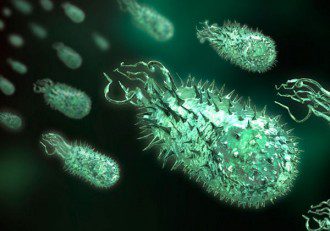By Josh Richardson
Guest Writer for Wake Up World
Collective motion can be observed in biological systems over a wide range of length scales, from large animals to fish to bacteria, because collective systems always work better for adaptation than those which are singular.
Individual bacterial cells have short memories. But groups of bacteria can develop a collective memory that can increase their tolerance to stress. This has been demonstrated experimentally for the first time in a study by Eawag and ETH Zurich scientists published in PNAS.
A central question in the study of biological collective motion is how the traits of individuals give rise to the emergent behavior at population level. This question is relevant to the dynamics of general self-propelled particle systems, biological self-organization, and active fluids. Bacteria provide a tractable system to address this question, because bacteria are simple and their behavior is relatively easy to control.
Bacteria exposed to a moderate concentration of salt survive subsequent exposure to a higher concentration better than if there is no warning event. But in individual cells this effect is short-lived: after just 30 minutes, the survival rate no longer depends on the exposure history. Now two Eawag/ETH Zurich microbiologists, Roland Mathis and Martin Ackermann, have reported a new discovery made under the microscope with Caulobacter crescentus, a bacterium ubiquitous in freshwater and seawater.
When an entire population is observed, rather than individual cells, the bacteria appear to develop a kind of collective memory. In populations exposed to a warning event, survival rates upon a second exposure two hours after the warning are higher than in populations not previously exposed. Using computational modelling, the scientists explained this phenomenon in terms of a combination of two factors.
Firstly, salt stress causes a delay in cell division, leading to synchronization of cell cycles; secondly, survival probability depends on the individual bacterial cell’s position in the cell cycle at the time of the second exposure. As a result of the cell cycle synchronization, the sensitivity of the population changes over time. Previously exposed populations may be more tolerant to future stress events, but they may sometimes even be more sensitive than populations with no previous exposure.
Martin Ackermann comments: “If we understand this collective effect, it may improve our ability to control bacterial populations.” The findings are relevant, for example, to our understanding of how pathogens can resist antibiotics, or how the performance of bacterial cultures in industrial processes or wastewater treatment plants can be maintained under dynamic conditions. After all, bacteria play a crucial role in almost all bio- and geochemical processes. From a human perspective, depending on the particular process, they are either beneficial — e.g. if they break down pollutants or convert nutrients into energy — or harmful, especially if they cause diseases. For the researchers, says Mathis, another important conclusion can be drawn: “If you want to understand the behaviour and fate of microbial populations, it’s sometimes necessary to analyse every single cell.”
Bacteria also have the collective capacity to generate many neurotransmitters and neuromodulators. For example, certain Lactobacillus and Bifidobacterium species produce gamma-aminobutyric acid (GABA);Escherichia, Bacillus and Saccharomyces produce norepinephrine (NE).
Future studies of how microbes contribute to the function of their host on all levels will play an important role in advancing understanding of health disorders as well as disorders of social interaction.
Article sources:
Previous articles by Josh Richardson:
- 20 Sources of Pain in the Body are Each Directly Tied to Specific Emotional States
- Ways To Connect To The Earth and Others
- Fascinating New Study Shows How Emotions Are Mapped On The Human Body
- The Electromagnetic Field is Depleted in Those Who are Unhealthy
- Don’t Know What You’re Passionate About? Here Are 15 Ways To Discover It
- 9 Reasons You Need To Be Giving and Receiving Hugs Every Day
- Study Confirms That Matters of the Heart Directly Influence the HEALTH of Your Heart
- 15 Ways to Create a Sense of Gratitude in Your Life
- Photographer Shows Proof of Amazing Similarities In Human Templates Between Complete Strangers
About the author:
Josh Richardson is blogger, healer, and a constant pursuer of the natural state of human consciousness.
This article reposted with permission from PreventDisease.com

If you've ever found value in our articles, we'd greatly appreciate your support by purchasing Mindful Meditation Techniques for Kids - A Practical Guide for Adults to Empower Kids with the Gift of Inner Peace and Resilience for Life.
In the spirit of mindfulness, we encourage you to choose the paperback version. Delve into its pages away from screen glare and notifications, allowing yourself to fully immerse in the transformative practices within. The physical book enriches the learning process and serves as a tangible commitment to mindfulness, easily shared among family and friends.
Over the past few years, Wake Up World has faced significant online censorship, impacting our financial ability to stay online. Instead of soliciting donations, we're exploring win-win solutions with our readers to remain financially viable. Moving into book publishing, we hope to secure ongoing funds to continue our mission. With over 8,500 articles published in the past 13 years, we are committed to keeping our content free and accessible to everyone, without resorting to a paywall.








